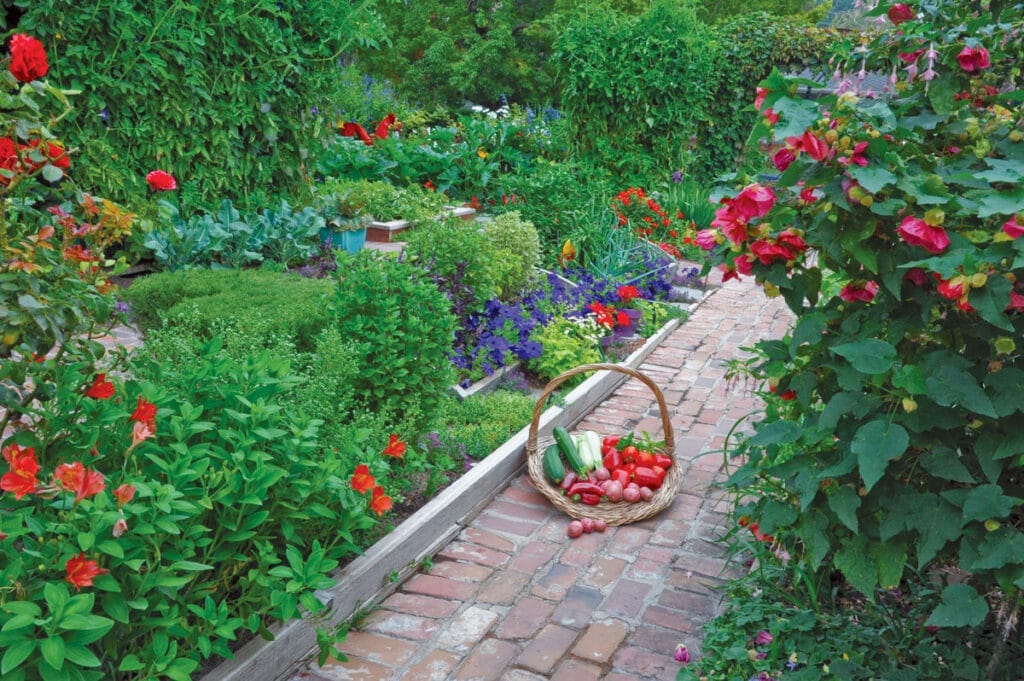Edible Landscaping: Create a Beautiful and Functional Yard
By Innovation Grounds
In today’s world, where sustainability and self-sufficiency are becoming increasingly important, edible landscaping is emerging as a perfect blend of beauty and practicality. Imagine a yard where lush greenery, vibrant flowers, and delicious fruits and vegetables coexist, creating a visually stunning and functional outdoor space. If you’re looking to transform your garden into a sustainable oasis, edible landscaping might be the perfect solution. In this blog, we’ll explore what edible landscaping is, its benefits, and how to design your own beautiful, food-producing yard.
What is Edible Landscaping?
Edible landscaping is the practice of incorporating edible plants into your landscape design. This could involve planting fruits, vegetables, herbs, and even edible flowers within your garden beds, flower borders, and other ornamental areas of your yard. Instead of having a traditional landscape that features only ornamental plants, you grow plants that offer food for your family while enhancing the beauty of your outdoor space.
The concept of edible landscaping is not new. In fact, it’s a practice that has been around for centuries, with ancient cultures using plants for both aesthetic and culinary purposes. Today, however, edible landscaping has gained new popularity due to its environmental and health benefits.

Why Choose Edible Landscaping?
Sustainability and Environmentally Friendly:
One of the most significant advantages of edible landscaping is its sustainability. By growing your own food, you reduce the need for transportation of produce, lowering your carbon footprint. Additionally, many edible plants require fewer pesticides and fertilizers, making your garden a healthier environment for both plants and wildlife.Fresh, Organic Produce at Your Doorstep:
Growing your own food means you have access to fresh, organic produce right from your yard. You’ll enjoy the taste of vine-ripened tomatoes, fragrant herbs, or homegrown berries, all without worrying about harmful chemicals that may be present in store-bought produce. It’s a rewarding experience to harvest food you’ve cultivated yourself.Aesthetically Pleasing and Functional:
Edible landscaping isn’t just about food—it’s about creating a beautiful and functional yard. With careful planning, you can integrate colorful vegetables, fragrant herbs, and fruit-bearing plants into your landscape design. Fruit trees, berry bushes, and vibrant edible flowers like nasturtiums or pansies can add texture and color, while herbs such as lavender or rosemary offer both culinary and decorative appeal.Cost-Effective:
Growing your own food can save you money in the long run. Instead of buying expensive organic produce, you’ll have a supply of fresh fruits, vegetables, and herbs right outside your door. Over time, the initial investment in seeds, soil, and tools will pay off as you harvest your bounty.

How to Create Your Own Edible Landscape
Now that you know the benefits, how can you get started on your edible landscaping project? Here are some tips to help you create a beautiful and functional yard:
Plan Your Space:
Before you start planting, plan the layout of your edible landscape. Consider factors such as sunlight, soil type, and water availability. Map out areas for sun-loving plants like tomatoes, peppers, and herbs, as well as shadier spots for leafy greens like lettuce and spinach.Choose the Right Plants:
Select a variety of edible plants that are well-suited to your climate and growing conditions. Popular choices include fruit trees (apple, peach, or citrus), berry bushes (blueberries, raspberries), and perennial herbs (thyme, oregano, mint). You can also add vegetables like kale, carrots, or squash, and edible flowers like marigolds or pansies.Incorporate Edible Plants into Your Landscape Design:
Edible plants can be integrated into your existing garden beds, mixed in with ornamental plants, or used as focal points in your landscape design. For example, you could plant lavender alongside roses, or add rows of spinach beneath ornamental shrubs. You can also create edible ground covers like strawberries or thyme, which can help with erosion while providing a tasty snack.Consider Seasonal Planting:
Plan your edible landscaping around the seasons to ensure year-round food production. You can have early spring crops like lettuce, followed by summer tomatoes and herbs, and late-season crops like squash and root vegetables. Additionally, incorporating perennial edible plants (like asparagus or rhubarb) will provide you with long-term harvests.Use Companion Planting:
Companion planting is a technique where certain plants are grown together because they complement each other in terms of growth, pest control, and overall health. For example, planting basil alongside tomatoes can help repel pests and improve flavor, while marigolds can deter harmful insects from other plants.

Conclusion
Edible landscaping is a wonderful way to create a functional and beautiful yard that provides you with fresh, homegrown food while enhancing your outdoor space. By carefully selecting plants that suit your environment, planning your layout thoughtfully, and considering factors like companion planting, you can cultivate a vibrant, sustainable landscape that will provide both aesthetic pleasure and practical benefits for years to come. Whether you have a small balcony, a suburban garden, or a large plot of land, edible landscaping is a fantastic way to transform your yard into a beautiful, functional, and food-producing oasis.


